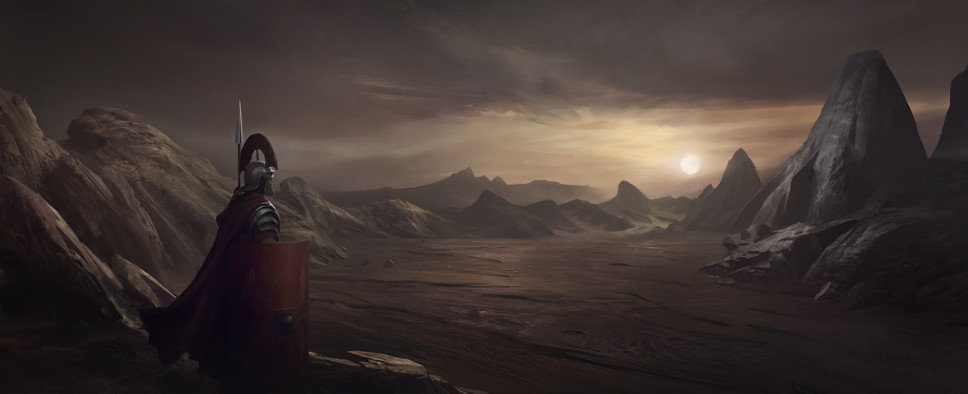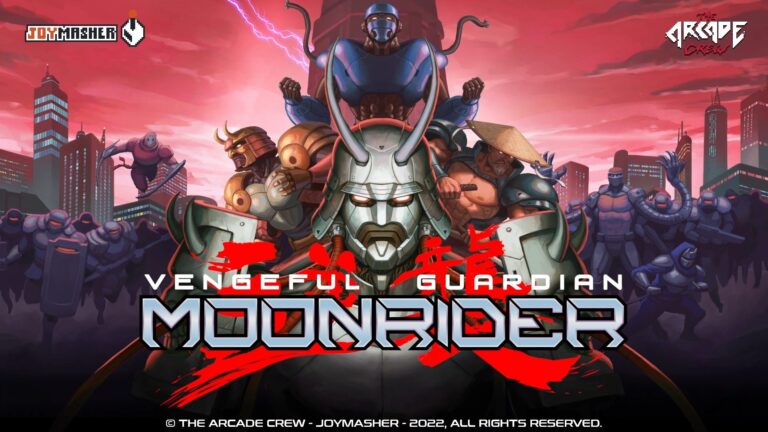The Age of Decadence is both an interesting game and story. As the ongoing labor of love by Iron Tower Studio, the long-in-development CRPG has been called vaporware more than once, and even became something of a Duke Nukem Forever in the indie RPG community. Nevertheless, over the last six-odd months, there’s been a growing buzz around the game once more as more and more information has come out regarding the game’s closed beta testing.
Now, that beta (actually a newer build than the one previewed by some sites a couple months back) has been released to the public. Hyped up as a game that truly incorporates choice and consequence in a meaningful way, as well as perhaps the long-lost spiritual cousin to Fallout 2 and Arcanum, it’s safe to say that it’d be almost impossible for Age of Decadence to live up to every expectation. As someone who’s been anticipating the game for years and has been starved for a good CRPG in the vein of my favorites, Age of Decadence may not be perfect, but based on the preview build, is shaping up to provide CRPG fans almost everything they’ve been waiting for.
Manifold Opportunities
The Age of Decadence‘s larger story isn’t especially clear at this point, but it takes place in a post-apocalyptic Roman-inspired setting, “after the fall” as it were – independent nobles vying for power, a vast desert wasteland stretching between cities, and the poor and downtrodden left to survive by the skin of their teeth. The introduction of the game centers around a rich trader who trots into the city of Teron, with an initially-worthless-looking map in his possession. This trader is the center of attention on one night: the Forty Thieves guild, the merchants’ Commercium, Boatmen of Styx assassin’s guild, and even more individuals are all involved in his affairs one way or another. Suffice to say, the merchant ends up dead, his map ends up in the hands of the player, and everyone in Teron feels the fallout of the event and the subsequent power struggles.
If there is one thing that is both Age of Decadence‘s biggest strength and its biggest selling point, it’s replayability. Taking on one of eight backgrounds (Assassin, Drifter, Grifter, Thief, Merchant, Mercenary, Loremaster, or Praetor), your involvement in the game’s opening events can change dramatically based on this choice. Perhaps you’re the assassin contracted to kill the merchant, or the bodyguard assigned to protect him, or a thief just trying to make an “honest” wage, or a noble servant of House Daratan dealing with the aftershock… either way, your perspective on the matter influences not only what details of the story you see (making repeat plays necessary to get a full understanding of what’s going on), but what gameplay opportunities you have available.
Of course, those background choices don’t limit what you’re capable of. As background is independent of character attributes and skills (though the presets encourage you to stick to certain roles), and many more events can occur as a result of your successes or failures, you’re not actually locked into anything beyond the opening sequence. Starting out as a Commercium merchant doesn’t mean you have to finish the game that way – screw up and you’ll find yourself out on the street, ready to join a new faction. There is huge potential for creative problem-solving, backstabbing, and using prior knowledge and events to your advantage, and frankly, it may well be the most intricate faction system and plotline of just about any game ever made.
If there’s one complaint to be made about all of this complexity, though, it’s that it can often come at a price. Many situations are heavily determined by your allegiances, prior actions, or character build, and this means that sometimes you won’t have access to alternatives, and even certain story threads can be cut off from you depending on how the cards lie. This is realistic and refreshing to see, but it also means that sometimes you’ll feel like you don’t have as much choice as you really do. This can encourage hoarding of skill points right up until the last minute you need them, rather than the more “build character now, deal with situation later” approach that the majority of other RPGs hinge on. In other words, save often.
Be All You Can Be
If there’s one thing I love about CRPGs, it’s their character systems. As I tend to lean towards the “roll-player” end of the spectrum, I really appreciate RPGs that allow me to customize my character in ways that are both creative and reflected in the game mechanics and world. Very few RPGs, unfortunately, do such a thing in this day and age. Arcanum may well be my favorite RPG of all time for this reason, imbalance and all, and it’s a little sad I have to praise games like Kingdoms of Amalur: Reckoning simply for having non-combat skills at all.
The Age of Decadence, however, doesn’t just have a good character system, it has one of the best I’ve seen in a decade. Borrowing heavily from Fallout, its six attributes (Strength, Dexterity, Constitution, Perception, Intelligence, and Charisma) and 23 skills (12 non-combat, 11 combat) are additionally bolstered by close to a dozen reputation stats and the aforementioned backgrounds. There isn’t just a choice between “punchy guy” or “talky girl”, there’s the opportunity to do just about whatever you want and see the game world respond accordingly. Focusing on combat, for instance, doesn’t mean you’ll never have a chance to use your head or social graces, and meanwhile smooth-talkers can also get ahead with a knife as much with words – Age of Decadence ensures just about every scenario can play out in multiple ways no matter how you spec your character.
Like the manifold story paths, the character system also presents lots of opportunities to make mistakes. Probably my first five or six combat-oriented characters met with incredible and humiliating failure, for instance, until I was able to better wrap my head around the mechanics and learn to exploit enemy weaknesses in combat. Likewise, as a merchant, I could barter my way to success on many occasions, but just as often I’d find myself with a knife through my gut when I bit off more than I could chew. As mentioned above, this encourages frequent saving and reloading to gain foreknowledge of situations, and it’s a meta-gaming requirement not all players will be happy to see included.
When everything falls into place, though, the character system and quest design is immensely satisfying. My most enjoyable run through the demo involved me playing as a Praetor, skilled in the art of negotiation and buttering-up rather than swords. Along this path, I was able to use my wit and tact to pit other factions against each other without ever having to lift a finger, and talked my way out of several situations that were certain death for just about anyone else. Even my reputation as a servant of House Daratan came in handy on more than one occasion. Still, at every juncture I could also see how things might go differently if I had invested those points in swordplay instead of etiquette.
No Free Rides
Made especially clear right off the bat is that Age of Decadence is a very challenging game, especially once diplomacy fails and combat initiates. Battles are turn-based and, much like the character system, play out in a way highly reminiscent of Fallout, albeit with ranged combat serving a much more limited role as swords, warhammers and spears come to the forefront. Taking place on a square grid instead of a hex one, there are several options in both attack types (fast, normal, power, flurry, aimed attacks, etc.) but for the most part battles hinge more to preparation more than anything else.
Whereas in most RPGs, combat is something that is expected and looked forward to, in The Age of Decadence it’s usually something that must be carefully considered and weighed. Just like trying to convince someone of a difficult proposition, there is just as much weight and gravity to killing someone (or at least trying to). This is reinforced by the character system, which applies equally to you and the NPCs in the game. Your two-bit mercenary might be able to hold a sword and slaughter delicate traders with ease, but you’re also easy meat for battle-hardened soldiers; meanwhile, your scholar-politician might be able to cite the most obscure works, but her futile wailing won’t even scratch the most petty of thugs.
One unfortunate downside of the game is that, as it’s not party-based, combat can sometimes feel a tad repetitive. Much like Fallout, many of the best tactics involve crippling enemies and using superior agility to run circles around them while peppering them with single attacks (cue Benny Hill theme), or simply require you have better gear/more HP/etc., and even in the more chaotic five-on-five battles where you’re backed up by friendlies, you’ll find yourself having to work around the other NPCs. Healing is also very limited, so you’ll often win one difficult fight only to find yourself staring down a crossbow bolt.
This same brutality found in combat also carries over to many of the game’s other situations. While many people might be turned off that sometimes the best choice is to simply walk away from a battle, trying to talk yourself out of a tough situation or convince someone to join your cause can be difficult if not impossible as well, and there are many paths in the game that are mutually exclusive or impossible for certain builds, even those related to the main plot. Rarely are you locked into an entirely bad choice, as failing one check often allows you to make up with another, but the typical “speech = win” mindset sported by many other RPGs is also nowhere to be seen here. You can and will screw up, and in many cases will have to live with the consequences.
Closing Thoughts
Even so, there are a lot of things many players won’t enjoy about The Age of Decadence. Some, like some rough game balance and an almost stripped-down world with very little non-essential content, may be addressed before release. Others, like the high dependence on text descriptions and the general lack of exploration, looting, and environment interaction, are probably going to stay for the long haul. Iron Tower are still taking feedback into account, but I don’t think players will be satisfied going into the game expecting it to be X or Y – despite the inspiration, Vince and crew have made a game that’s all their own, for better or for worse depending on your preferences.
Ultimately, the demo of Age of Decadence has, more than any game in a long while, left my jaw firmly planted on the floor. As an RPG player who loves deep character systems, game worlds with rich lore, nebulous and amoral situations, deep reactivity and interesting quest design, The Age of Decadence doesn’t just meet the bar, it leaves some of the best and classic CRPGs in the dust. And as much as I can complain and nit-pick about what the game does or doesn’t do, I find myself constantly coming back to it, just to try the same scenarios again as a different character, or to see if I can win a challenging fight, and ten times through, I’m still finding new locations, events and characters – that’s the sign of a great RPG to me.
There may be some rough edges, but Iron Tower’s long-lost “dead game in a dead genre” has already brought me more enjoyment in its demo than just about every other RPG to come out in the last several years, and I for one can’t wait to try to the final game.






